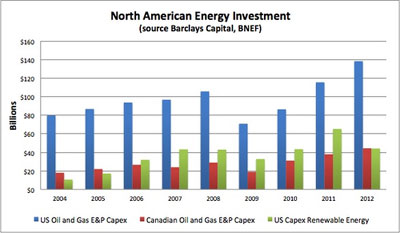As you can imagine, the environmental community – including us – is extremely disappointed in the State Department’s poor environmental analysis of the Keystone XL pipeline.
The State Department concludes that "approval or denial of the proposed project is unlikely to have a substantial impact on the rate of development in the oil sands, or on the amount of heavy crude oil refined in the Gulf Coast area."
Once again, the group they contracted with to do the analysis have strong oil industry ties! EnSys Energy has worked with ExxonMobil, BP and Koch Industries; Imperial Oil, one of Canada’s largest oil sands producers, is a subsidiary of Exxon.
This is flat out false. Today, the US imports 2.3 million barrels of tar sands oil every day from Canada, twice what we import from Saudi Arabia. Approving the pipeline would add another 700,000 barrels a day – two thirds of what we import from Venezuela.
If TransCanada’s pipeline gets the go-ahead, tar sands production will double – from 3.2 million barrels a day after the pipeline is built to 6.2 million barrels a day by 2030, according to the Canadian Association of Petroleum Producers.
Actor Robert Redford, a long time environmentalist, weighed in today with his thoughts:
"Mr. Secretary, I am disappointed. I thought that we all understood that to fight climate change, we have to be able to say "no" to dirty energy projects. Our friends around the world are looking to us for climate leadership and it starts with drawing the line at tar sands expansion.
It also means that we need to give health and environment a fair shake in the environmental review of a dirty energy project such as the Keystone XL tar sands pipeline. Yet the draft environmental review prepared by the State Department for Keystone XL misses what folks in industry themselves are saying: the Keystone XL project is necessary for expansion of tar sands. We know this means that Keystone XL will make climate change worse.
Once again, the State Department acknowledges that tar sands are dirtier than conventional oil and will make climate change worse. So how, can it then not tell us about what this means for our climate?
Somehow, the State Department claims that tar sands will be developed anyway so it doesn’t need to look at the harm done by expansion. This just doesn’t make sense.
Our friends in British Columbia are saying no to tar sands pipelines to the west coast. Our friends in eastern Canada and New England are saying no to tar sands pipelines to the east coast. Rail is a pretty expensive alternative. What is left? Keystone XL’s path to the Gulf Coast."
Here are five reasons why the Keysone XL pipeline is absolutely essential to expanding tar sands production in Canada, according to Andy Stevenson, an advisor to the Natural Resources Defense Council:
1. Why does tar sands oil trade $45/barrel below the global price of oil? One word – Pipelines.
Record increases in US oil output and a lack of sufficient pipeline access to the Gulf of Mexico has contributed to a supply gut at Cushing, Oklahoma. This supply gut has lowered the price for US oil production by $20/barrel relative to the global benchmark (Brent Crude) over the past two years.
As Alberta tar sands has to travel farther to arrive at Cushing (and costs more to refine) it trades at an even steeper discount ($45/barrel) to the global benchmark.
2. Lack of pipeline capacity is why tar sands oil is expected to experience shut-ins this year and next.
With existing tar sands pipeline capacity already maxed out, new production is expected to push the prices they receive down even further this year.
Industry analysts expect low prices to force shut-ins of tar sands oil thru 2014 and TAN grades (that trade at even a larger discount to West Texas crude) are close to shut in levels already.
3. Without Keystone XL, tars sands oil output will likely stagnate beyond 2015 due to limited pipeline capacity.
While the Enbridge Pipeline system (which in total will be able to move 1.2mln bpd of tars sand oil) is expected to push prices back up in 2014, Keystone is still seen as critical to raising the price of tar sands oil back up to a price that will allow full exploitation.
4. Rail is not really an alternative solution for tar sands transport
The State Department says tar sands can be shipped by rail and other means besides the pipeline, but that’s not accurate.
While rail transport has increased recently, it isn’t expected to provide a significant uplift to tar sands oil production. Tar sand oil requires special rail cars for transport, which are in even shorter supply than regularly rail cars. These coiled rail cars keep the bitumen heated during transport and currently have an 18 month to 2 year waiting list for delivery.
Although some incremental growth can be handled by rail, it is not likely to ever be a bankable form of transport for new large scale production projects.
5. The US is well on its way to energy independence without tar sands oil production
Capital spending in US oil and gas exploration and production has been running at a annualized rate of over $100 billion per year for the past decade, the equivalent of 25 cents of every dollar spent globally in recent years.
These investments have put the US on a path to energy independence over the next decade that is not reliant on dirty tar sands oil.
Further, if the US raises investments in renewable energy to even half of what it spends on oil and gas exploration and production (up from roughly one third as much today), the US could achieve its goal of energy independence sooner.

